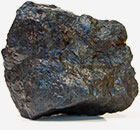Know Your Magnetic Fluids
Not all magnetic fluids are created equal, and knowing the difference means finding innovative uses for these dynamic compounds
From critical electronics to beautiful art, magnetic fluids play an important role in hundreds of processes, devices and products. Known as ferrofluids, these amazing liquids contain millions of of nano- or even microscale particles of magnetite or other iron-containing compound.
 The typical ferrofluid contains magnetic solids suspended in a surfactant. The magnetic particles are dispersed evenly throughout the liquid, and this unique distribution makes these fluids something special. They’re called a colloidal suspension, which means that ferrofluids have properties of more than one state of matter – in this case, a solid metal and a liquid carrier fluid.
The typical ferrofluid contains magnetic solids suspended in a surfactant. The magnetic particles are dispersed evenly throughout the liquid, and this unique distribution makes these fluids something special. They’re called a colloidal suspension, which means that ferrofluids have properties of more than one state of matter – in this case, a solid metal and a liquid carrier fluid.
If you’ve seen The Big Bang Theory, you may have seen a colloidal suspension dancing on a speaker as a solid, only to transform into a liquid when the speaker is turned off. Possessing two states of matter as ferrofluids does makes these unique compounds useful as seals and lubricants, and current research trends suggest ferrofluids might be used in nanotechnology.
While all ferrofluids are powerful tools for the development of technology, one of the most interesting subsets of ferrofluid are magnetorheological fluids, or MRFs. These fluids solidity in the presence of a magnetic field, opening up the possibility of using these amazing suspensions in any situation where one might need to transform frequently between a liquid and a solid. Here are just a few of the hundreds of applications for ferrofluids and MRFs:
Electronic devices
From the moment you power on your computer until you shut it down, the computer’s hard disk drive is spinning anywhere from 4,200 RPM to a staggering 7,500 RPM. Keeping that drive spinning requires precision design and durability made possible only through the use of remarkable lubricants. When placed into the microns-wide gap between the magnet and the shaft of a hard drive, ferrofluid forms a barrier which prevents debris from entering the hard drive while also providing a viscous membrane in which the drive can spin.
Heat Transfer
Few factors cause more damage to complex machines than excess heat, which can weaken metal, degrade electronic components and break down vital lubricants and seals. When an external magnetic field is imposed on ferrofluids, the fluids become a conduit for thermomagnetic convection – moving heat away through the flow of magnetized particles.
Because these particles are so tiny – again on the nano- or even microscale – ferrofluids make ideal heat transfer systems in miniature and microscale devices or even in reduced gravity conditions.
Where other cooling methods require the presence of fans to move air or pumps to circulate fluid, ferrofluids move on passive magnetic forces, which means the system cools without the need for additional power.
Materials Science
In addition to saving the British Navy from a new type of anti-ship mine during World War II, physics pioneer Francis Bitter developed a technique by which magnetic domain structures on the surface of ferromagnetic materials might be imaged using ferrofluids.
Analytical instrumentation
Each grain of ferrous material in a ferrofluid reflects light, giving ferrofluids special refractive properties. Each grain is a micromagnet, and when used in conjunction with a helium-neon laser, a polarizer and an analyzer, ferrofluids are critical components of measuring specific viscosity of liquids.
Optics
One of the challenges with earth-based telescopes are the requirements for the mirrors. Once the mirror is ground to shape and polished, certain of the mirror’s properties – focal length, depth of field, and others – are set, thus limiting the telescope’s utility in certain areas of study. However, researchers are currently adapting ferrofluids in an effort to create shape-shifting magnetic mirrors to create earth-based telescopes with fully adaptive optics.
Art
Wherever there is science, art is never far behind. That’s true of ferrofluids, where artists and museums are finding new and exciting uses for these compounds and their remarkable properties. From fountain shows to music videos, ferrofluids are making their way into art. Here are just a few examples:
- Sachiko Kodama – ferrofluid artist
- Pendulum – Australian electronic rock band incorporating ferrofluids into their music video for “Watercolour”
- Martin Frey – SnOil (2005), a pixel-based ferrofluid display that used electromagnets to display text and run games
- CZFerro – An American art studio that uses ferrofluids in unique suspension solutions.
A nubile material for diverse applications
From the farthest reaches of the solar system to the tiniest spaces inside your computer, ferrofluids are there, empowering innovation from the largest helicopters to the smallest micro machines.
For more information about the potential applications for magnetite, including ferrofluids, continue browsing our research pages.
Request more information about Magnetic Fluids, Smart Fluids & MRF Fluids
A friendly Quality Magnetite customer service representative will be in touch to discuss your inquiry

